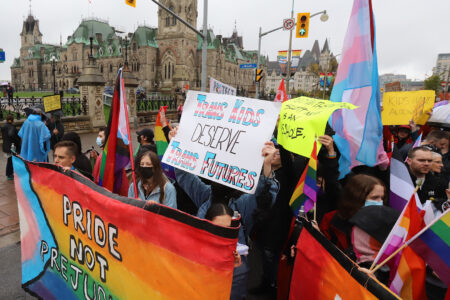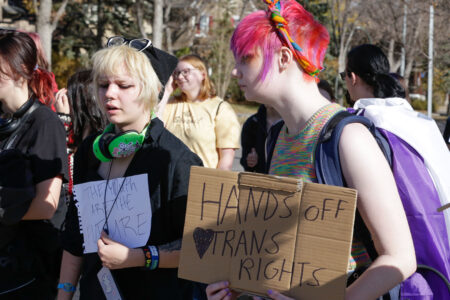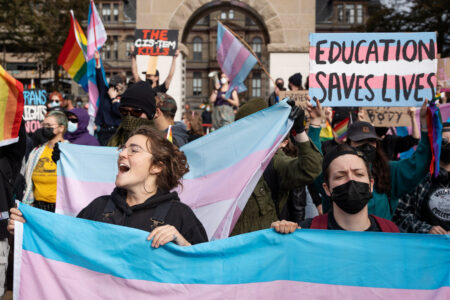
Ron Graham has written a remarkable account of how and why Canadians finally became on November 5, 1981, a truly sovereign people. This occurred after Canadians had lived under and were governed by an Imperial Statute, the British North America Act, 1867, for over a century. On this day Prime Minister Pierre Trudeau and nine premiers put their signatures on an agreement that would become the Constitution Act, 1982. Canadians’ renewed Constitution defined Canada as a constitutional democracy and assigned the legislators, the executives and the courts as the guarantors of the Constitution. The Constitution Act, 1982, patriated and Canadianized the colonial BNA Act, provided a range of amending formulae, enhanced dramatically provincial control over nonrenewable resources, and guaranteed equalization grants. Its centrepiece was the groundbreaking Canadian Charter of Rights and Freedoms, one that guaranteed fundamental freedoms; expansive equality rights; language rights, including long overdue education rights for Official language minorities; the recognition of Canada’s multicultural makeup; and the recognition of the Aboriginal peoples, including status and nonstatus Indians, the Métis and the Inuit.
Despite the hard-earned 1931 Statute of Westminster, which gave Canada full control over its foreign and defence policy and trade, and the ending of appeals to the Judicial Committee of the Privy Council in 1949, Canadians remained a legal colony of Great Britain. Why? Our federal and provincial political leaders, who believed unanimity was essential, had failed on several occasions to agree upon an amending formula. The Last Act, the story of how Canada became a fully independent nation-state, is recounted with great clarity, nuance, candor and balance by one of Canada’s great non-fiction storytellers, Ron Graham. He understands and explains the competing conceptions of the source Canadian sovereignty, the elites versus the people. Those familiar with the several rounds of mega-constitutional negotiations from 1967 to 1982 will discover that Graham’s succinct and vivid account adds some new insights, thanks largely to his extensive interviews and his access to some new documentation. His story, which has some of the most piercing portraits of the main actors, pays well-deserved homage to our late 20th century Fathers of Re-Confederation — they were still all white men in suits. Graham’s welcome account comes on the 30th anniversary of this event, one that is, and will be, central to our constitutional history.
The Last Act is modelled on a superbly scripted and well-choreographed play in five acts. The Prologue sets the troubled background for the momentous roll-of-the dice, high-stakes federal-provincial constitutional conference that would take place in November 1981. The national unity crisis had grown topsy-turvy: the rise and consolidation of the Québécois secessionist movement; the failure of the Victoria Charter in 1971; the election of a Parti Québécois secessionist government in 1976; Trudeau’s failed attempts to restart constitutional negotiations followed by his defeat in 1979 and return in 1980; the highly divisive 1980 referendum on the secession of Quebec that the federalist No forces won by 60 to 40 percent; and finally, the abject failure of the Constitutional Conference of September 1980 when the premiers to a man balked at Trudeau’s threat to unilaterally patriate the BNA Act with the Victoria Charter’s region-based amending formula and a minimalist charter of rights and freedoms that entrenched official language rights.
In Act 2, Graham takes the reader into the morning of November 4, 1981, of the highly charged constitutional conference dealing with the future of Canada. Fed up with the premiers’ rejection in September 1980 of a resolution to patriate the BNA, Act, 1867, with a region-based amending formula and a charter, Trudeau decided to move unilaterally. Nevertheless, he was compelled by an ambiguous 1981 Supreme Court Patriation Reference case ruling to convene one last constitutional conference to garner the support of a substantial number of premiers so the process would be politically legitimate. Ottawa’s Conference Centre was buzzing with tension as Trudeau and his allies, Bill Davis of Ontario and Richard Hatfield of New Brunswick, confronted face to face the recently created Gang of Eight — Bill Bennett of BC, Peter Lougheed of Alberta, Allan Blakeney of Saskatchewan, Sterling Lyon of Manitoba, René Lévesque of Quebec, John Buchanan of Nova Scotia, Angus MacLean of Prince Edward Island and Brian Peckford of Newfoundland.
Graham’s portraits of the central players are quite superb. Trudeau and Lévesque, two scorpions, one cerebral, the other emotional, in a bottle, held starkly contrasting visions of nationalism, the role of the state and Quebec’s place in, or out of, the Canadian federation. The conference was a coup de force during which Trudeau had to break the Gang of Eight. If he failed, Trudeau would be compelled to take unilateral action in the United Kingdom to patriate the BNA Act with an amending process and a far more comprehensive charter imposed on the government by the people of Canada during parliamentary committee discussions over the winter of 1980-81. Trudeau set the stage for the ultimate breakup of the Gang of Eight by getting Lévesque to accept his proposal for referenda on the amending formula and the Charter. Lévesque accepted because he feared that Blakeney was going to bolt and he believed that he could win a referendum in Quebec. In Trudeau’s words: “The cat is among the pigeons.”
In Act 3, the centrepiece in this drama, Graham reveals how and why the western premiers — led by a very astute Blakeney and his wily sidekick Roy Romanow and fully backed by the more aloof but determined Peter Lougheed and his perceptive minister Peter Meekison — brilliantly out manoeuvred Lévesque. They got the constitutional deal, and the power that would eventually flow from it, that the West so desperately wanted. What is clear from Graham’s brilliant account of the players and their manoeuvres is that the possibility of a “kitchen accord” between Jean Chrétien, Romanow and Roy McMurtry resided in the months of intense and secretive bilateral negotiations that were conducted by these three behind-the-scenes players, especially between the “Uke and Tuque” — Romanow and Chrétien. Lévesque’s constitutional team, led by Claude Morin, was never really in the loop. Lévesque was nominally part of the Gang of Eight as he served the purpose of the western premiers who wanted a deal but on their terms. Neither Lévesque nor his advisers were ever really taken into the full confidence of Blakeney or Lougheed and their respective advisers. In short, they rightly distrusted Lévesque’s motives. My own research and writing on Lougheed concurs with Graham’s interpretation.
Graham’s portraits of the central players are quite superb. Trudeau and Lévesque, two scorpions, one cerebral the other emotional, in a bottle, held starkly contrasting visions of nationalism, the role of the state and Quebec’s place in, or out of, the Canadian federation.
Once the Gang of Eight was broken, the Uke and the Tuque, with the support of Ontario’s McMurtry, got to work feverishly on a compromise deal based on their discussions over the summer and early fall. The making of the deal played out in Act 4 is often called erroneously “The Night of the Long Knives.” Graham uses the term critically in his trenchant portrayal of how and why during the late day and throughout the late night of Wednesday November 4, Chrétien, Romanow, Meekison, McMurtry and other players hammered out a deal that their respective bosses could live with. Based on their knowledge that Lévesque and Morin would veto every compromise required for a deal, they decided not to inform Lévesque until the morning. Throughout the negotiating process Premier Davis, who was determined to derail a referendum, remained in constant communication with the group. Davis then played his ace. He called Trudeau to let him know that he thought the deal was a good compromise and that Trudeau should support it. Ottawa would accept Alberta’s equality of the provinces in the 7/50 general amending formula while the provinces would accept the comprehensive Charter with a notwithstanding clause. If the deal was rejected, Davis informed Trudeau that he would not support him in London. The jig was up! A shaken Trudeau told his ministers and advisers of the turn of events. He authorized Chrétien to get the best deal he could. Trudeau reluctantly accepted the 7/50 amending formula and the dreaded notwithstanding clause on fundamental rights on condition that it be renewed by legislators every five years. Chrétien and Trudeau hoped Lyon would not agree so that Lévesque could not claim that Quebec had been deliberately excluded. Alas. Lyon, in the midst of an election, did not want to be seen to be in bed with the separatists so he agreed very reluctantly to sign on to the deal.
Of course Lévesque, his ministers and advisers, once they learned of the deal at breakfast, were outraged. Lévesque felt betrayed and humiliated by his nemesis Trudeau who, he proclaimed, had given up Quebec’s veto by abandoning the regional amending formula. An embittered Lévesque, in no frame of mind to push hard for concessions for Quebec that Trudeau was willing to offer, simply opted out of the negotiations. He had gambled by putting his fate in the hands of the premiers and he lost. Lévesque was a broken leader and he would never really recover. The PQ went into a tailspin and would not recover until the crises over the Meech Lake and Charlottetown Accords.
What Graham fails to deal with adequately in his overwhelmingly top-down approach is the tremendous national outcry from women’s organizations when they discovered that nine premiers had forced Trudeau to agree that the notwithstanding clause would apply to section 28 equality rights. In a clear display of their hard-won political influence during the 1970s, the feisty women’s organizations promptly forced the premiers to rescind the application of section 33 to section 28. Neither does Graham deal with the Aboriginal organizations’ very successful campaign to reinstate section 35 recognizing the Aboriginal and treaty rights of the Aboriginal peoples of Canada. The narrow-minded premiers had forced Trudeau at the last minute to drop s. 35 from the Resolution. These two successful campaigns were a premonition of what was to come when Mulroney, Bourassa and the other premiers foolishly tampered with the people’s package, the Charter, in the Meech Lake Accord. A rights revolution had occurred during the 1970s and this had assisted Trudeau in framing and obtaining the comprehensive, uniquely Canadian Charter of Rights and Freedoms. He could not have done it without the people.
In Act 5, the Epilogue, Graham recounts succinctly the political fallout of the Constitution Act, 1982: the unravelling of the Parti Québécois and their framing of the dangerous myth of the night of the long knives Brian Mulroney’s political victory in 1984 was based on his ill-conceived pact with the charismatic Québécois indépendantiste, Lucien Bouchard, and his Québécois nationalist admirers.
The Mulroney and Robert Bourassa alliance brought Canadians the controversial 1987 Meech Lake Accord that failed ratification in Manitoba and Newfoundland, and their even more controversial Charlottetown Consensus Report of 1992 that was routed in a national referendum, and finally, the 1995 Quebec referendum that came within 50,000 votes of destroying Canada.
According to Graham, Canada’s survival is a testimony to the common sense of Canadians and the fact that the Charter of Rights and Freedoms crystalized more quickly as a unifying force than even Trudeau thought. As in all enduring and inspiring stories, the outcome was never preordained. It was, as Graham has artfully demonstrated, the product of a serendipitous coming together of character and circumstance.
Ron Graham. The Last Act: Pierre Trudeau, the Gang of Eight, and the Fight for Canada. Toronto: Allan Lane Canada, 2011.
Photo: Shutterstock







